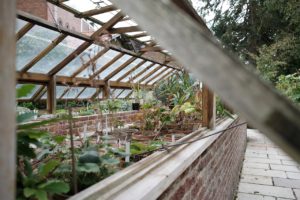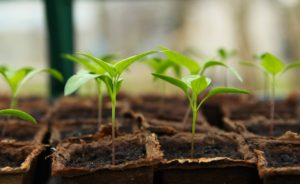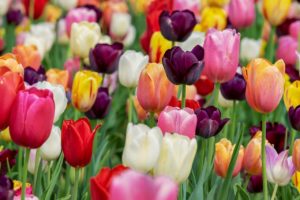
Finally. At long last the lingering, biting Cape Cod winter is breaking into Spring. The final crests of snow have melted away to reveal the stretch and yawn of the first crocuses, and the impatient shoots of eager daffodils. The Spring Peepers can be heard in the bogs and marshes, the Ospreys have returned to their platforms to nest, and the local gardeners have thumbs that are growing greener with each passing mild day. So many of us are itching to get outside and rake the leaves, amend our soils, and stock our greenhouses. Novice gardeners or those who are new to Cape have a lot of things to consider, especially with botanical projects that can take months of love and attention to detail before the gorgeous and often delicious payoff. Seasoned growers will advise utilizing native plants whenever possible, that are cold hardy, and appreciative of our sandy soil and local pollinators, but even experienced gardeners will benefit from up-to-date information as standards and recommendations develop over time. C.L. Fornari is a gardening guru residing in Sandwich, co-host of Plantrama podcast, and author of several books about gardening on Cape Cod, and when asked to share her expertise she was happy to oblige.
When Fornari moved to the Cape in 1993 she was unable to find a book about Cape Cod gardening, so she wrote it herself. She has since written several books about gardening on Cape Cod, with her book Sand and Soil being the most recent. She goes on to explain how local gardening standards have changed significantly in the past 30ish years since her first Cape gardening book was published in the mid-90s. “The plants that we thought were great at that time have proven to be not so desirable. Some plants that were commonly sold at that time are now “banned in Boston” (and the rest of the Commonwealth) because they are invasive. And there are new pests, diseases, and plants that people should know about. It was for those reasons and more that I wrote a new book about Cape Cod gardening and didn’t just update the original one.”
Leave the Leaves?
While we may be ready to banish the leaf piles from our flowerbeds, Mother Nature has other ideas. The leaves that have been insulating our lawns and Spring bulbs all winter have also been providing shelter for overwintering bees and butterflies, and although the sight of tulip leaves peeking through the crisp remnants of fall is enough to have us reaching for the rake, we of course also want to be mindful of the sleepy pollinators who are about to once again embark upon the priceless work that our very existence depends on. What are we to do?
Fornari answers, “This question is a great example of how standard landscaping practices have changed in the past ten years, and how we’re all called to be more flexible in our thinking. Back in the day, we did a “fall clean up” and a “spring cleanup.” All the leaves were removed in those clean sweeps, and usually (horrors!) removed from the property. Now we know better about the value of leaves for plants and pollinators. But it’s not either or.” She tells us that although you’ll see posts talking about waiting to clean up a garden until temperatures are above 50, there is no hard science behind that number. “Homeowners need to know that it’s not all or nothing. You can remove some leaves anytime, take others out in May, and leave some in place as Nature intended.”
When it comes to amending soil, Fornari contends that we should never assume that our soil needs improving, pointing out the thousands of mosses, trees, and all the plants in between that thrive comfortably without help. She recommends grouping plants that we know have soil requirements, (using Hydrangeas as an example), in areas where we can amend the soil from the top down, adding “Soil ‘improvement’ practices have changed in the past twenty years. We know now that tilling, digging, and replacing native soils should be avoided whenever possible.”
Gardens this time of year tend to be limited to early perennials including favorites like basket-of-gold and bleeding heart, so Fornari suggests adding pansies to your space for a burst of color and a touch of cheer.
The Green Spot Opens for Business

Pansies are what Jim Behnke, owner of The Green Spot Garden Center, says are his biggest seller this time of year. The 4 decades-old family-owned garden center has a nursery and 2 greenhouses on-site in addition to a full line of annuals, perennials, roses, shrubs, and trees. Jim looks forward to seeing early patrons popping in for seed starters and specialty soils, and to check out the annual specials of things like Miracle Grow and Hollytone. They have onions and garlic in stock, followed soon by cold-loving plants like lettuce and broccoli, and a few weeks after that, potato seedlings. For those of us rushing to get started on our veggie gardens, Jim warns not so fast. “The biggest thing you have to pay attention to is weather,” he cautions, mentioning that it won’t be time to get many crops in the ground until up to May and June in some cases. “Sometimes you gotta pinch yourself and remember to be patient.”
The Green Spot is located at 1085 Route 28 in South Yarmouth and is open seven days a week from 9-5.
This blog is funded through the Town of Yarmouth’s Tourism Revenue Preservation Fund.
(Britt Skinner is a freelance writer.)


